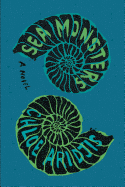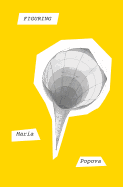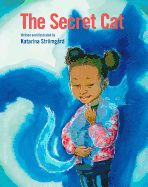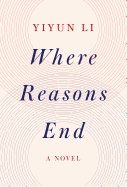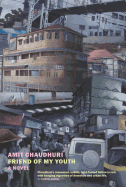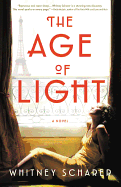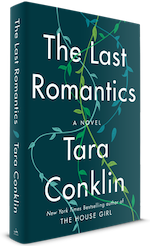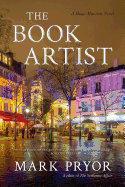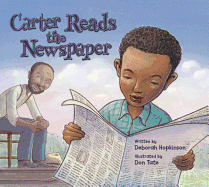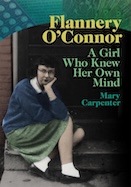Week of Friday, February 8, 2019
So many dystopic novels concern zombies or robot uprisings that it's easy to forget about the environmental apocalypse developing right now. According to the UN Intergovernmental Panel on Climate Change, we have until only 2030 to make the rapid changes necessary to avoid disastrous levels of warming. I'm increasingly drawn to fiction that reflects my anxieties about climate change and other environmental challenges.
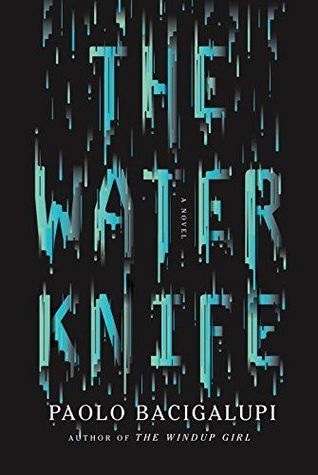 Paolo Bacigalupi puts ecological concerns at the center of his science fiction novels, including his young adult and middle grade novels. His recent novel The Water Knife is set in a near-future American Southwest locked in a desperate struggle over dwindling water resources. Bacigalupi's speculative future is less a parable than a realistic look at where we might be heading. He draws heavily from Marc Reisner's prophetic 1986 opus Cadillac Desert.
Paolo Bacigalupi puts ecological concerns at the center of his science fiction novels, including his young adult and middle grade novels. His recent novel The Water Knife is set in a near-future American Southwest locked in a desperate struggle over dwindling water resources. Bacigalupi's speculative future is less a parable than a realistic look at where we might be heading. He draws heavily from Marc Reisner's prophetic 1986 opus Cadillac Desert.
 Sam J. Miller's Blackfish City joins a wave of too-believable futures that share key elements: rising sea levels, climate refugees, rule of law eclipsed by ultra-wealthy oligarchs. Violence is never far from the surface, or even war in the case of Omar El Akkad's American War, where climate change lights the fuse for a second American Civil War.
Sam J. Miller's Blackfish City joins a wave of too-believable futures that share key elements: rising sea levels, climate refugees, rule of law eclipsed by ultra-wealthy oligarchs. Violence is never far from the surface, or even war in the case of Omar El Akkad's American War, where climate change lights the fuse for a second American Civil War.
 Which is not to say that climate anxiety is confined to speculative fiction. Barbara Kingsolver's Flight Behavior is a meditation on flawed media narratives and the way climate change's costs fall on those least able to bear them. Ian McEwan pierced the heaviness of the topic in his novel Solar through wry comedy. I believe fiction that ignores ecological realities risks irrelevance, not only to me but to a rising generation of readers who will have to live through the consequences of warming. Where climate change once played a role mainly in books set in the far future, writers are starting to realize that the future isn't so far away. --Hank Stephenson, bookseller, Flyleaf Books, Chapel Hill, N.C.
Which is not to say that climate anxiety is confined to speculative fiction. Barbara Kingsolver's Flight Behavior is a meditation on flawed media narratives and the way climate change's costs fall on those least able to bear them. Ian McEwan pierced the heaviness of the topic in his novel Solar through wry comedy. I believe fiction that ignores ecological realities risks irrelevance, not only to me but to a rising generation of readers who will have to live through the consequences of warming. Where climate change once played a role mainly in books set in the far future, writers are starting to realize that the future isn't so far away. --Hank Stephenson, bookseller, Flyleaf Books, Chapel Hill, N.C.
Sea Monsters
by Chloe Aridjis
Sea Monsters by Chloe Aridjis (Books of Clouds, Asunder) is a dreamy, wandering tale of teenage ennui and searching, and the pull of the sea.
Luisa is 17 and bored with school in Mexico City, her parents and her classmates. Her interests include her best friend Julián and his stereo, as well as her French teacher's encouragements and the books he lends her. Suddenly she is enchanted by a newspaper headline: "Ukrainian Dwarfs on the Run." It is suggested that these escapees from the circus have headed to the beaches of Oaxaca; for Luisa, they become crossed in her mind with a sort of hidden treasure: something to seek.
There is a boy, too. Tomás Román: even the syllables of his name have power. Luisa has trouble understanding his pull on her, but as it resembles the pull of the Ukrainian dwarfs at the beach, she follows the impulse, and boards a bus with Tomás for the coast.
Because it is 1988, a soundtrack of Depeche Mode, Siouxsie and the Banshees, the Cure and Joy Division backs up Luisa's surreal travels. Her attention drifts between the immediate present and an interior world populated by French poetry, ancient shipwrecks and imagined worlds. As Luisa dreams away her days in a little village called Zipolite, her father searches for her. And he will have some of the best stories to tell by the end of this weird, captivating novel.
The plot of Sea Monsters is somewhat quiet, with Luisa spending much of her time inside her own head, but Aridjis's style makes this an absolute pleasure even when nothing is happening. --Julia Kastner, librarian and blogger at pagesofjulia
Discover: A disenchanted teenager in 1980s Mexico City runs away from home hoping to find Ukrainian dwarfs on a Oaxacan beach in this lovely, surreal novel.
Where Reasons End
by Yiyun Li
Immersed in grief, a novelist constructs a conversation with her son in the weeks following the 16-year-old's suicide. In Where Reasons End, Yiyun Li--PEN/Hemingway Award-winning author of six previous books--combines the despair of losing a child with the articulate and often impatient observations from the teenager in a brief, heartbreaking imagining of a parent desperately wishing her son back to life.
The repartee between Mommy and Nikolai meanders "in a world unspecified in time and space." Their conversation ranges from playful to tragic, often detouring to banter about clichés, or parts of speech, or memories. The longer these debates (which Nikolai inevitably wins) continue, the longer he'll be with the writer, one senses. He accuses her of being "wimpy," which leads her to mourn that The Diary of a Wimpy Kid has a new installment, which he would "never read now." She confides that she relives dropping him off on the day he died, when she accidentally passes the intersection "where I last saw you" he says. "That line should be mine," she thinks. "Mine, too," he says.
This sorrowful novel is a meditation on bereavement, with contemplative conversations between mother and son interspersed with the concrete symbols of loss--the new house he won't live in, the books he won't read. "We once gave Nikolai a life of flesh and blood; and I'm doing it over again, this time by words," Mommy writes. Where Reasons End leaves us achingly sad, but moved by the beauty of undying love. --Cheryl Krocker McKeon, manager, Book Passage, San Francisco
Discover: A writer imagines conversations with her son, in the weeks after his suicide.
I Owe You One
by Sophie Kinsella
Fawn "Fixie" Farr is dependable and loyal--the youngest child in a British family that owns and operates a West London home-goods store that sells everything from licorice to hardware to children's toys. Since Fixie's father's death, Fixie has honored him by preserving and growing the business he started, working alongside her mother and older siblings Jake and Nicole. "Family loyalty is a big thing" to 27-year-old Fixie, who earned her nickname because of her penchant for fixing things and people--and keeping everything in its proper place.
But all that's challenged when domineering Jake starts socializing with posh people and wants to overhaul the business to appeal to a more upscale crowd. When Fixie's mother has a health scare and takes a hiatus from the shop, normally non-confrontational Fixie locks horns with Jake and his high-minded plans, along with beautiful, yet "drifty and vague" Nicole, and her uncle, who steps in to lend a hand. Along the way, Fixie's former crush Ryan returns from an unsuccessful stint in Hollywood, and Fixie rescues the laptop of handsome investment manager, Sebastian, who, in his gratitude, proclaims to Fixie, "I owe you one." If Fixie takes Seb up on his offer, might it prove the impetus finally to upend the status quo of her life?
A cast of quirky characters infuses this briskly paced, lighthearted story. Kinsella (My (Not So) Perfect Life) adds another entertaining meet-cute rom-com to her long line of escapist fictions. --Kathleen Gerard, blogger at Reading Between the Lines
Discover: A fun, lighthearted story about a spirited 20-something woman tangled up in family, business and romantic woes.
Friend of My Youth
by Amit Chaudhuri
In Friend of My Youth, narrator Amit Chaudhuri--not to be confused with the novel's author, Amit Chaudhuri--returns to Bombay, his childhood home, on a book tour. Perhaps even more disconcerting than the city's subtle changes in the wake of 2008 terrorist attacks is the absence of Amit's childhood friend Ramu, who has become more representative of Amit's past than even the city itself. Ramu, while remaining tethered to the place of their youth, has become untethered from the world at large through his deepening drug addiction. In grappling with his lingering loyalties to Ramu, Amit must also consider the ways a person as well as a place can exist across many moments in time.
Like Chaudhuri's other literary projects, Friend of My Youth experiments with form, from the mirroring of the novel's author in its protagonist to the narrator's explicit rejection of the term autobiography. Just as the boundaries of reality and fiction become diffuse in Chaudhuri's telling of Amit's story, his two subjects--Bombay and Ramu--ultimately also combine into a single being of simultaneous existence. Chaudhuri seamlessly draws these parallels through his intricate descriptions of everyday minutiae. Through his kaleidoscopic prose, for instance, the lobby of a hotel suddenly, brilliantly becomes a portal into understanding looped time, in which a happy ending is superseded by a new arrival. In this way, Chaudhuri's writing has a tendency to burrow into the reader's own daily experiences, a tendency that Chaudhuri himself describes as the way "novels begin for me. There's a convergence. I live. Then something prompts me to write. The writing is not about life. It is a form of living. The two happen simultaneously." --Alice Martin, freelance writer and editor
Discover: Amit Chaudhuri’s Friend of My Youth offers a thoughtfully meta exploration of the passage of time, the multiplicity of selves, and the way in which writing and place can connect the two.
The Age of Light
by Whitney Scharer
Paris, 1929. Former Vogue model Lee Miller has moved to the City of Light to pursue her dreams of becoming a photographer, "to make art instead of being made into it." An arresting beauty, Lee was her father's favorite subject for his photos, but she wants more out of life than modeling. When she meets the artist Man Ray, she is drawn into his Surrealist circle, becoming first his assistant and then his lover and muse.
In her debut novel, The Age of Light, Whitney Scharer charts the unfolding of Lee and Man's passionate, tempestuous relationship. Lee relishes the chance to learn new photographic techniques, developing her artistic eye and gaining confidence. But while she cares deeply for Man, her growing artistic ambitions threaten his fragile ego and make her feel stifled, until ultimately she will have to choose between him and her work. Scharer inserts brief flashes forward to Lee's work as a journalist and photographer during World War II and in postwar Germany and Eastern Europe, though she leaves an unexplained gap of almost a decade.
Scharer vividly evokes the bohemian swirl of 1930s Paris: endless parties and secret opium dens, artists intent on their own work and wildly jealous of their compatriots. Both Lee and the reader are swept up in the artistic scene, but the story underneath is much more interesting: a woman learning to claim her place in the world, to find and capture not only light but "the feeling of being alive." --Katie Noah Gibson, blogger at Cakes, Tea and Dreams
Discover: Whitney Scharer's debut novel follows Lee Miller's pursuit of love and photography with Man Ray in 1930s Paris.
The Last Romantics
by Tara Conklin
Tara Conklin's second novel, The Last Romantics, is a full-bodied drama that explores a family's expanding and contracting dynamics as the characters grow to adulthood following a devastating loss. We meet Renee, Caroline, Joe and Fiona, the Skinner siblings of Bexley, Conn., right after their father, Ellis, dies of a heart attack. Their mother, known to everyone, including her children, as Noni, is only 31. Forced to move from the cozy family home--yellow and cheerful, in a safe section of town with a swing set in the backyard--to a dark, shabby, gray house miles away from their old neighborhood, Noni succumbs to the dual pressures of her husband's death and an unsecure financial future, mentally shutting down, and unable to care for herself or her children.
The youngsters find themselves without any real parental input, a difficult and rowdy interval in their lives that they refer to as the Pause. The Pause is a formative, albeit vulnerable, time for the Skinner children. Their roles and responsibilities vis-à-vis each other take root during the months they spend effectively on their own. Renee is the caretaker and substitute mother, presiding over a chaotic and messy house; Caroline is the frightened, unsure one; Joe's the popular baseball star who bravely protects his sisters; and Fiona is an adventurous tomboy and bookworm.
Noni eventually emerges from her grief stronger and braver. She takes back the reins of motherhood from Renee, finds a job and embraces feminism. The lesson of their father's death, she tells her girls, is to never be financially dependent on a man. Renee absorbs this lesson, focused as she is on her medical career. Caroline rejects her mother's version of feminism, marrying and becoming a mother herself at the age of 19. Joe bypasses the lessons in feminism his mother never thought to teach him and goes on to lead a charmed but sadly unsuccessful life as an alcoholic New York banker. Fiona writes a controversial blog about female sexuality and struggles to establish herself as a poet.
The unusual narrative format of The Last Romantics is similar to that of Atonement, Ian McEwan's masterpiece, and is equally successful as deployed here. Fiona is our narrator and her story begins in the year 2079, when she is 102 years old, a famous and reclusive poet who consents to one last public appearance. Seated on stage in an auditorium packed with her fans, Fiona marvels at the enduring power of her iconic work, "The Love Poem," the one that catapulted her to fame and continues to inspire generations. When asked about Luna, the poem's muse, she embarks on a story that takes her back to her childhood and eventually to a revelation about the identity of Luna and how her life intersected with the Skinner family.
We learn that as the decades pass and each sibling takes a different life route, their childhood attachments to each other become strained; all four carry scars from the their father's premature death and the Pause. Joe struggles the most, his inner life drastically at odds with the outward trappings of his short-lived success. Conklin tenderly exposes the internal dissonance at Joe's unraveled core: he has the looks, charm and athletic ability to be popular, and life seems easy for him. But it's his fragile emotional life that trips him up. From childhood, he struggled with his responsibilities as the man of the house, never fully developing a sense of self. When Joe falls in love, things start looking up, but unfortunately not for long. His life is a fragile house of cards, one his sisters strive mightily to save from destruction despite Joe's refusal of aid. The siblings' propensity to keep secrets from each other--a habit they picked up during the Pause--doesn't help them.
With this latest offering, Conklin (The House Girl) has proven once again that she is an expert storyteller. The Last Romantics contains all the essential elements of a compelling Greek tragedy, one that also provides a mercifully cathartic release for its emotionally spent main characters and, ultimately, for the reader. The Skinners realize what is truly important to them only when it is lost forever. The lessons they learn, albeit too late, are the inspiration behind Fiona's "The Love Poem" and form the backbone of Conklin's artful exploration of the dynamism behind sibling relationships. The skillful three-dimensional rendering of Joe and his sisters welcomes the reader into the inner sanctum of their preoccupations and rivalries. Intensely moving, The Last Romantics is a thoughtful family drama with exceptional characters at its heart. --Shahina Piyarali
Mystery & Thriller
The Book Artist
by Mark Pryor
Hugo Marston enjoys his Parisian life. His job as head of U.S. embassy security is interesting and challenging, and his casual relationship with Claudia, a lovely journalist, is satisfying.
But then his boss, U.S. Ambassador J. Bradford Taylor, asks Hugo to attend the opening of an art exhibition in Montmartre. The artist is a talented young American, Alia Alsaffar, and Hugo's drawn in by her quick wit, stunning beauty and her art--which features sculptures made of books.
When a dead body turns up at the opening of the exhibition and suspicions focus on someone close to Hugo, he can't just stand by and watch a wrongful conviction. So he begins a parallel investigation. Meanwhile, Hugo's old friend Tom is tracking down a killer who's gotten out of prison and has good reason to hold a grudge against Hugo and Tom from back in their FBI days. Distracted by Tom and worried about the case, Hugo must use all of his talent to catch a killer before disaster strikes.
With its vivid Parisian setting, and an inviting slew of minor characters, The Book Artist is an enjoyable seventh entry in the Hugo Marston series by Mark Pryor. The Book Artist can easily be read as a standalone, allowing the reader to jump into Hugo's life and savor the twists and turns of the story. Gently paced but layered with intrigue, The Book Artist is sure to appeal to readers of mysteries and spy thrillers. --Jessica Howard, bookseller at Bookmans, Tucson, Ariz.
Discover: In this absorbing mystery, the head of security at the U.S. embassy in Paris becomes embroiled in an investigation when one of his friends is arrested for murder.
House of Beauty
by Melba Escobar, transl. by Elizabeth Bryer
In Melba Escobar's House of Beauty, first published in Colombia in 2015, a young girl named Sabrina is brutally murdered after a visit to an exclusive, upscale salon in Bogotá. Her beautician, Karen, was the last person to see Sabrina alive and finds herself drawn into the tragedy. On its face a simple thriller, this novel simultaneously operates on a much deeper level, introducing readers to a series of women navigating, and at the mercy of, the swirling corruption and menace of Bogotá. Their stories intertwine in a tale of social inequalities and psychological trauma that is both absorbing and deeply troubling.
Escobar has a striking talent for turning a complex and multi-layered phrase. For example, when Sabrina comes in for a wax so that she can be "smooth as an apple" for her much (much) older boyfriend, the image is both subtle and disturbingly vulgar. There are frequent transitions among the multiple narrators, which can be disruptive, but the characters are well drawn, if not always terribly sympathetic, and each has a distinct and recognizable voice. Descriptions of the Colombian setting are equally distinctive, and Escobar creates an intense sense of place. Though never light or easy, House of Beauty is unfailingly compelling and will keep readers engaged until the bitter end. --Judie Evans, librarian
Discover: This thriller set in Bogotá, Colombia, explores the dark side of society's obsession with beauty.
The Hiding Place
by C.J. Tudor
It's late summer, and 40-year-old Joe Thorne has just moved from Manchester to Arnhill, the village where he grew up. He tells everyone that he has returned to pursue a job as an English teacher at his old school, Arnhill Academy, and folks seem to buy it. "People have told me I have an honest face," Joe informs the reader. "Which just goes to show how little people know." The truth is, Joe has returned after two decades away because he received an e-mail from an unidentified source saying, "I know what happened to your sister. It's happening again." "Your sister" is Annie, Joe's younger sibling, who died in Arnhill 25 years earlier; "what happened" isn't immediately clear to the reader.
Joe is replacing a teacher who recently committed suicide, taking her son with her. Joe rents their former home, in which the murder-suicide occurred: "Even in a dump like Arnhill this cottage is the only thing I can afford," he tells the reader, and then confides, "Of course, that isn't the only reason I chose it." Of course it isn't.
As in her creep-tastic debut, The Chalk Man, C.J. Tudor has built a narrator who is an amiable if not entirely transparent stand-in for a conventional thriller's detective. But a conventional thriller The Hiding Place is not, especially given its reliance on horror mainstays like nightmares, a spooky doll and gore galore. Nevertheless, the surprise-abundant book's witty, self-effacing narration is closer to Nick Hornby than to Stephen King. --Nell Beram, author and freelance writer
Discover: A mysterious e-mail summons a man to his hometown after a two-decade absence in C.J. Tudor's pleasingly unhinged thriller-horror hybrid.
Biography & Memoir
Antarctica's Lost Aviator
by Jeff Maynard
Jeff Maynard (Wings of Ice; The Unseen Anzac), has written a compelling history of a largely forgotten figure in Antarctic exploration. Lincoln Ellsworth, heir to a vast American fortune, probably gay and perpetually depressed, turned to exploration as a way to make his mark on the world. Overshadowed by his domineering father for most of his life, Ellsworth drifted around the world, spending large amounts of time in the Grand Canyon, Death Valley, New York and Switzerland.
But then, in the mid 1920s, Ellsworth met Roald Amundsen, the famous Norwegian explorer, and found his passion. Nearly 50, a dilettante society bachelor all his life, Ellsworth was an unlikely character to break into polar exploration. But over the next decade he did just that, becoming involved in expeditions to the North and South Poles. His journeys finally culminated in the hiring of Sir Hubert Wilkins, an experienced Australian explorer, to put together the Ellsworth Trans-Atlantic Expedition. In 1935 Ellsworth and pilot Herbert Hollick-Kenyon set off from the Weddell Sea, planning to be the first men to fly completely across Antarctica and land in the Ross Sea.
Full of interactions with larger-than-life figures in polar exploration, including Amundsen, Umberto Nobile and Robert E. Byrd, Antarctica's Lost Aviator is a rollicking history of an unusual man. Ellsworth's inability to organize the expedition that bore his own name, his strange quirks and his obsession with exploration make him a fascinating character. History readers and travel readers alike will enjoy Antarctica's Lost Aviator. --Jessica Howard, bookseller at Bookmans, Tucson, Ariz.
Discover: This captivating history of polar exploration tells the story of Lincoln Ellsworth, a wealthy American determined to become the first man to fly across Antarctica.
Essays & Criticism
Figuring
by Maria Popova
Fans of Maria Popova's popular Brain Pickings website will marvel at her book-length nonfiction effort that blends two of her lifelong passions: poetry and science. Figuring offers a sweeping panorama of scientific thought and artistic development by focusing on major historical figures with the kind of encyclopedic erudition and enthusiastic insight Popova is known for. The book starts with astronomer Johannes Kepler and shifting paradigms of human understanding. It jumps to the 19th century to explore luminaries such as Emily Dickinson and Ralph Waldo Emerson. Popova connects the Transcendentalist movement with the emergence of the environmental movement in the 20th century. The latter is exemplified in the groundbreaking work of Rachel Carson, the focus of the end of the book.
Figuring is more than biography. It has an intellectually feminist tenor that not only celebrates pioneering women like Margaret Fuller and Maria Mitchell, but examines their interconnectedness and the way their achievements inspired and catalyzed entire movements. Popova often writes in a first-person lyrical style, imbuing her subjects with the intimacy of kinship, as though they're all colleagues in a grand quest to capture "all the facts and figments by which we are perpetually figuring and reconfiguring reality." It is the intersection of art and science where Popova provides her brightest illuminations, finding "the poetic truth inside the scientific fact." She successfully argues that the environmental movement hinges on such a marriage, "bringing to the cold intellectual awareness a warm feeling-tone."
Electrifying and exhilarating to read, Figuring never lets down its passionate sense of discovery. --Scott Neuffer, freelance writer and editor
Discover: The creator of Brain Pickings surveys science, art, and feminism in this vast and energetic work of nonfiction.
Children's & Young Adult
The Secret Cat
by Katarina Strömgard
"Some people have pets./ Others don't./ I wish I could have one./ But I'm not allowed to."
Like so many children, Lucy wants a pet. But as her mom tucks Lucy into bed, she gives her daughter all the ("bad") reasons why they can't: not enough space, family allergies.... Lucy, in skeleton pajamas, pouts in bed until her mother leaves, when she hears a "scratching sound behind the wallpaper." "Guess my name," a purring voice says, "And then I'll come to you." Lucy guesses "Silvring"; a ghostly cat claws open a hole in the lush wallpaper and slinks out. Lucy is delighted. After snacking and playing together inside, Silvring convinces Lucy that they should go outside. The cat, who has been growing while chasing string and eating mashed potatoes, is now big enough for Lucy to ride. Outside, they encounter a world hovering between reality and fantasy, populated with other people out walking their pets, some "ordinary" and some "not." Most are nice, as Silvring tells her, "but some of them are dangerous"--as Lucy discovers the very next moment. Luckily, Silvring has grown even larger and protects her human friend.
With all the poignance and koan-filled mystery of Antoine de Saint-Exupery's The Little Prince and the fantastical magic of Japanese animated fantasy film My Neighbor Totoro, author/illustrator Katarina Strömgård's The Secret Cat (originally published in Sweden) is sure to enchant readers of all ages and pet persuasions. Readers will likely become lost in the whimsical watercolor and ink illustrations of graceful fish flying like kites above a bathrobed man, a queen astride a lumbering polar bear and a deliciously terrifying pair of bizarre beaked villains. Any child who has ever longed for a furry playmate can gleefully hop right on board Lucy's flight of fancy. --Emilie Coulter, freelance writer and editor
Discover: In this lovely, dreamlike Swedish picture book, a small girl who is not allowed to have a pet finds a ghostly cat that opens the door to a magical world.
Just Right: Searching for the Goldilocks Planet
by Curtis Manley, illus. by Jessica Lanan
"When you look toward the stars, do you ever wonder if anyone is looking back?" A girl gazes up at the sky, lost in thought. "Is Earth the only planet with intelligent life? Is it the only planet with life at all?" These questions, and many more, are explored in the pages of Just Right: Searching for the Goldilocks Planet.
Although "people believed that other worlds must exist" for "thousands of years," it wasn't until 1995 that astronomers found proof that "some other stars... have planets." Now they're asking whether any of these distant "exoplanets" can support life. Using telescopes and "special methods for looking at starlight," astronomers have "already found a few Earth-sized exoplanets orbiting within the habitable zones of their [own] stars." But they don't yet know if any of these planets can support the kind of life we have on Earth.
Curtis Manley's text explains its fairly sophisticated concepts--including big ideas like "what could we do" if we found evidence of "beings like ourselves"--in a clear, concise way. Jessica Lana's illustrations cleverly take this informative text and make it accessible to young readers. By following the girl and her family as they enjoy a day trip to the planetarium, Lana presents much of the book's scientific information as dynamic exhibits on view; her expansive double-page spreads bring the material to life, depicting molten cores, gaseous and rocky exoplanets and more behind and around the family. Endpapers and back matter further enrich the volume, which emphasizes the tantalizing mysteries that abound in the search for "a planet much like our own--a Goldilocks planet, a planet that's just right." --Lynn Becker, blogger and host of Book Talk, a monthly online discussion of children's books for SCBWI
Discover: Astronomers search the stars, hoping to learn whether life exists anywhere else in the universe.
Carter Reads the Newspaper
by Deborah Hopkinson, illus. by Don Tate
Deborah Hopkinson (A Letter to My Teacher) and Don Tate's (Strong as Sandow) exemplary picture book about "the father of Black History" celebrates a lesser-known historic American: Carter G. Woodson, who "transformed the way people thought about history" and set the groundwork for Black History Month.
Carter was born on a farm, 10 years after the Civil War ended, to parents who had been slaves. He went to school only part time because he was needed at home, but his father, who had escaped slavery to join the Union army, "believed in being an informed citizen." Unable to read or write himself, he encouraged Carter to read the newspaper aloud, which gave the boy "his first glimpse of the wider world." Carter went on to high school, college and eventually got his Ph.D. from Harvard, becoming "the first and only Black American whose parents had been slaves to receive a doctorate in history."
Throughout his life, Carter understood that learning occurs in all kinds of places, in all kinds of ways, and he labored to make sure that history included "all people." Carter learned the stories of his people, and he wanted to make sure that everyone in the United States learned them, too. In 1926, he chose "the second week of February" to be Negro History Week, "to mark the birthdays of Frederick Douglass and Abraham Lincoln."
This inspiring picture book combines a rich but focused text with clear, expressive mixed-media illustrations. It sheds light on an important, inspiring, but little-known subject, and the supplemental back matter gives weight to the exceedingly important takeaways that history must include all people, and that anyone can change history. --Lynn Becker, blogger and host of Book Talk, a monthly online discussion of children's books for SCBWI
Discover: Without Carter G. Woodson's dedication to truth and inclusion, we might not have Black History Month as a time to honor key heroes in United States' history.
| Advertisement susan wiggs signed copy giveaway! |
|
Read what writers are saying about their upcoming titles
Flannery O'Connor:
|
Pub Date: ISBN: Type of Book: Age Range: List Price: |


